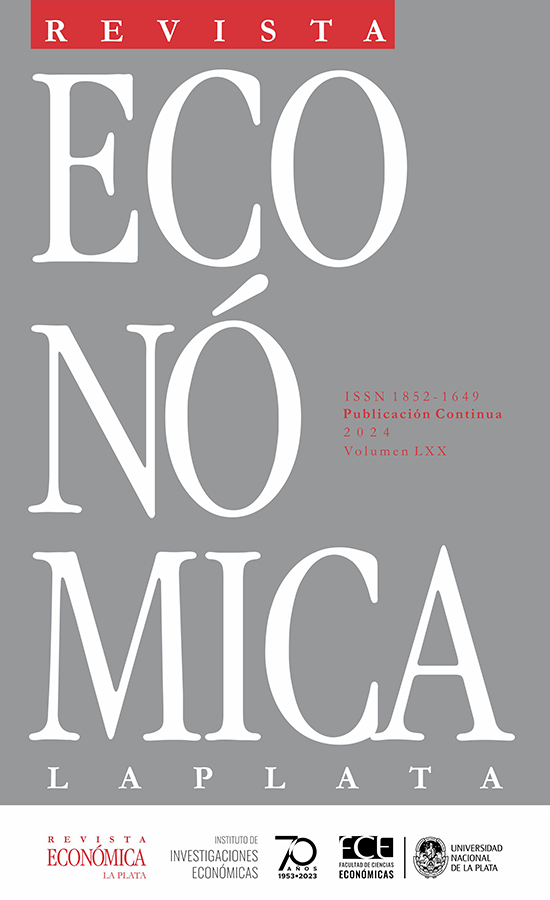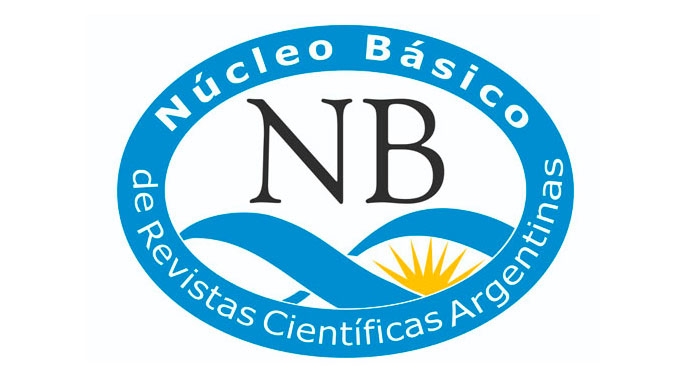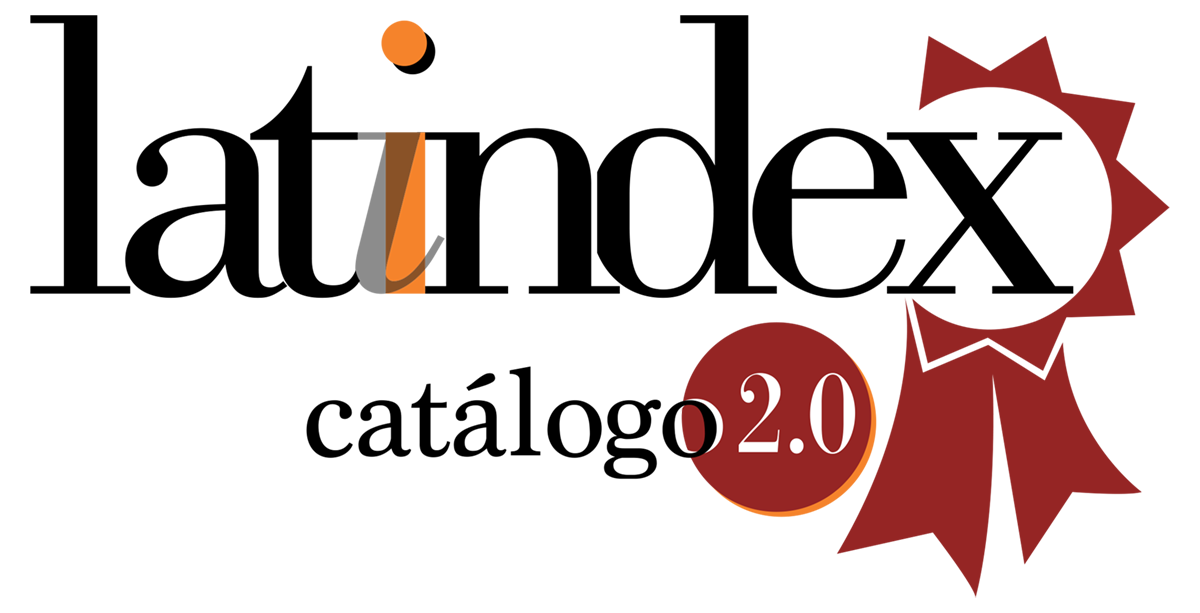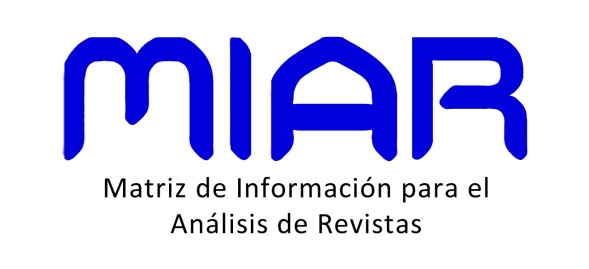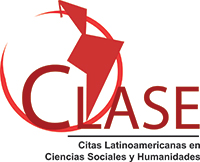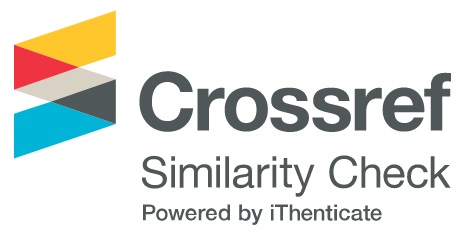Genetics and economics: Studies and perspectives
DOI:
https://doi.org/10.24215/18521649e036Keywords:
genetics, human genome, human behaviorAbstract
This paper analyzes the relationship between genetics and economics and the effects of both genetics and the environment on the phenotype of human beings. Among other issues, it describes how data from the human genome can be used to explain certain economic characteristics, such as the existence of entrepreneurship, attitude towards risk, income level, propensity to invest, and ease of receiving education. A series of works related to this issue are analyzed, and the various ways of drawing conclusions from existing data are described. The paper concludes by stating that this type of study is in its infancy, but that it helps to better understand, along with the evaluation of the environment, certain characteristics of human behavior and opens an interesting field of study for economics.
Downloads
Metrics
References
Albert, B., Johnson, A., Lewis, J., Raff, M., Robert, K. y Walter P. (2002). Molecular biology of the cell. Annals of Botany, 91(3), 401-405. https://doi.org/10.1093/aob/mcg023
Altshuler, D., McCarthy, M. y Rich, S. (2005). Genome-wide association studies for complex traits. Nature Reviews Genetics, (9), 356-369. http://doi.org/10.1038/nrg2344
Akerlof, G. y Shiller, R. (2015). Phishing for phools: The economics of manipulation and deception. Princeton University Press. https://doi.org/10.2307/j.ctvc777w8
Auffray, C. (2004). El genoma humano. Siglo XXI.
Barth, D., Papageorge, N. y Thom, K. (2020). Genetic endowments and wealth inequality. National Bureau of Economic Research Working Paper, 24642. https://doi.org/10.3386/w24642
Bingley, P., Cappellari, L. y Tatsiramos, K (2023). On the origins of socio-economic inequalities: Evidence from twin families. Institute of Labor Economics. Discussion Papers, 16520.
Beauchamps, J., Cesarini, D., Johannesson, M., van der Loos, J., Koellinger, P., Groenen, J., Fowler, J., Rosenquist, P., Thurik, R. y Christakis, N. (2011). Molecular genetics and economics. Journal of Economic Perspectives, 25(4), 57-82. https://doi.org/10.1257/jep.25.4.57
Becker, S. G. (1976). Altruism, egoism and genetic fitness: Economics and sociobiology. Journal of Economic Literature, (14), 817-826.
Behrman, J. y Taubman, P. (1976). Intergenerational transmission of income and wealth. American Economic Review, 66(2), 436-440.
Benjamin, D. Chabris, C. Glaeser, E. Gudnason, V. Harris, T. Laibson, D. Launer, L. y Purcell, S. (2007). Genoeconomics. En M. Weinstein, J. W. Vapuel y K. W. Wachter (Eds.), Biosocial Surveys (pp. 304-335). https://nap.nationalacademies.org/read/11939/chapter/20
Benjamin, D., Cesarini, D., Chabris, C., Glesser, E., Leibson, D., Guonason, V., Harris, T., Launer L., Purcell, S., Smith, A., Johanesson, M., Magnusson, P., Beauchamp, J., Christakis, M., Atwood, C., Hebert, B., Freese, J., Hauser, R., Hauser, T., Grankvist, A., Huffman, C. y Lichtenstein, P. (2012). The promises and pitfalls of genoeconomics. Annual Economic Review, (4), 627-662. https://doi.org/10.1146/annurev-economics-080511-110939
Carey, G. (2003). Human genetics for the social sciences. SAGE Publications, Inc. https://doi.org/10.4135/9781452229591
Carey, N. (2011). The epigenetics revolution: How modern biology is rewriting our understanding of generic, disease and inheritance. Columbia University Press.
Cesarini, D. y Visscher, P. (2017). Genetics and educational attainments. Nature Science of Learning, 2(4). https://doi.org/10.1038/s41539-017-0005-6
Collard, D (1978). Altruism and economics: A study in non-selfish economics. Southern Economic Journal, 46(1), 321-322. https://doi.org/10.2307/1057034
Dawkins, R. (2016). The selfish gene. Oxford University Press. (Trabajo original publicado en 1976).
Ding, W., Lehrer, S., Rosenquist, J. N. y McGovern, J. (2006). The impact of poor health on education: New evidence using genetic markers. National Bureau of Economic Research Working Paper, 12304. https://doi.org/10.3386/w12304
Ebstein, R., Salomon I., Chew, S., Zhong, S. y Knafo, A. (2010). Genetics of human social behavior. Neuron, 65(6), 831-844. https://doi.org/10.1016/j.neuron.2010.02.020
Francis, R. (2011). Epigenetics: How environment shapes our genes. W.W. Norton and Company Inc.
Garreton, V. Blanco, F. Holuigue, L y Salinas, P. (2007). Salicylic acid and reactive oxygen species in the activation of stress defense genes. En S. Hayat y A. Ahmad (Eds.), Salicylic acid: a plant hormone (pp. 197-246). Springer. https://doi.org/10.1007/1-4020-5184-0_8
Gunes, F. (2018). Penalized regression method for linear models in SAS/STAT. SAS Institute Inc Working Paper.
Hardy, J. y Singleton, A. (2009). Genome wide association studies and human disease. New England Journal of Medicine, 360(17), 1759-1768. https://doi.org/10.1056/NEJMra0808700
Hill, W., Davies, D., Ritchie, S. Skene, N. Brois, J. Bell, S. Di Angelantonio, E. Roberts, D. Xuenyi, S. Davies, G. Liewald, D. Porteous, D. Hayward, C. Butterworth, A. Mclntosh, A. Gale, C. y Deary, I. (2019). Genome-wide analysis identifies molecular system and 149 genetic loci associated with income. Nature comunications, (10). https://doi.org/10.1038/s41467-019-13585-5
Horvath, S. y Raj, K. (2018). DNA methylation-based biomarkers and the epigenetic clock theory of ageing. Nature Reviews of Genetics, (19), 371-384. https://doi.org/10.1038/s41576-018-0004-3
Hyytinen, A., Ilmakunas, P., Johansson, E. y Tolvanen, O. (2019). Heritability of lifetime earnings. The Journal of Economic Inequality, (17), 319-335. https://doi.org/10.1007/s10888-019-09413-x
Kauffman, M. (2018). Genetic variations, common diseases and human behavior. Economía y Biología. Academia Nacional de Ciencias Económicas.
Keynes, J. (1921). A treatise on probability. The Philosophical Review, 31(2), 180-186. https://doi.org/10.2307/2178916
Krammer, S. y Gören, E. (2021). Wired in? Genetic traits and entrepreneurship around the world. Technological Forecasting and Social Change, (168). https://doi.org/10.1016/J.TECHFORE.2021.120788
Lamarck, J. B. (2018). Zoological philosophy. Macmilan and Co. (Trabajo original publicado en 1809).
Lee, J. J., Wedow, R., Okbay, A., Kong, E., Maghzian, O., Zacher, M., Nguyen-Viet, T. A., Bowers, P., Sidorenko, J., Linnér, R. K., Fontana, M. A., Kundu, T., Lee, C., Li, H., Li, R., Royer, R., Timshel, P. N., Walters, R. K., Willoughby, E. A., ... Cesarini, D. (2018). Gene discovery and polygenetic prediction from a genome-wide association study of educational attainment in 1.1 million individuals. Nature Genetics (50), 1112-1121. https://www.nature.com/articles/s41588-018-0147-3
Manski, C. (2011). Genes, eyeglases and social policy. Journal of Economic Perspectives, 25(4), 83-94. https://doi.org/10.1257/jep.25.4.83
Mirsky, S. (2009). What´s good for the group. Scientific American, 300(1).
Molins, F., Fatmanur, S. y Serrano, M. (2022). The genetics of risk aversion: A systematic review. International Journal of Environmental Research and Public Health, (19). http://doi.org/10.3390/ijerph192114307
Navarro, A. (2018). Sociobiology and social science. Biology and economics. National Academy of Economic Sciences.
Pinker, S. (2002). The blank slate: The modern denial of human nature. Penguin Press.
Sacerdote, B. (2011). Nature and nurture effects on children’s outcomes: What have we learned from studies of twins and adoptees? En J. Benhabib, A. Bisin y M. O. Jackson (Eds.), Handbook of social economics. North Holland.
https://doi.org/10.1016/B978-0-444-53187-2.00001-2
Van der Loos, M. J. H. M., Koellinger, P. D., Groenen, P. J. F., Rietveld, C. A., Rivadeneira, F., van Rooij, F. J. A., Uitterlinden, A. G., Hofman, A. y Thurik, A. R. (2011). Candidate gene studies and the quest for the entrepreneurial gene. Small Business Economics (37), 269-275. https://doi.org/10.1007/s11187-011-9339-2
Tinbergen, J. (1968). Política económica. Fondo de Cultura Económica. (Trabajo original publicado en 1952).
Watson, J. y Crick, F. (1953). Molecular Structure of Nucleic Acids. Nature, (171). 737-738. https://www.nature.com/articles/171737a0
Wilson, E. (2000). Sociobiology: The new synthesis. Harvard University Press. (Trabajo original publicado en 1975). https://psycnet.apa.org/record/1975-28678-000
Published
How to Cite
Issue
Section
License
Copyright (c) 2024 Alfredo Martin Navarro

This work is licensed under a Creative Commons Attribution-NonCommercial-NoDerivatives 4.0 International License.
The material published in the journal is distributed under a Creative Commons Attribution-NonCommercial-NoDerivatives 4.0 International (CC BY-NC-ND 4.0) license. This license requires proper credit to be given, a link to the license to be provided, and changes to be indicated. It does not permit commercial use of the work, and if the work is remixed, transformed, or otherwise modified, distribution of such modification is not allowed.

